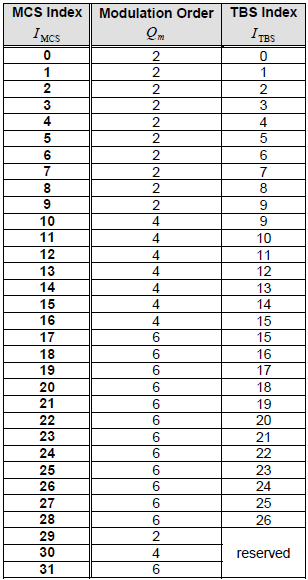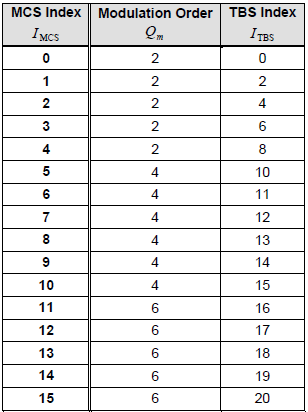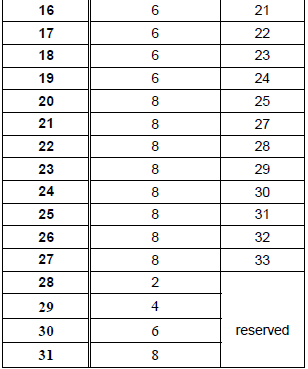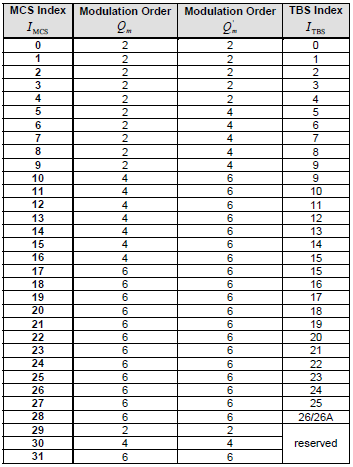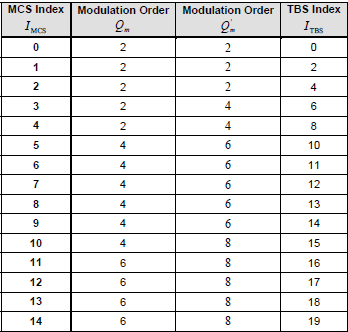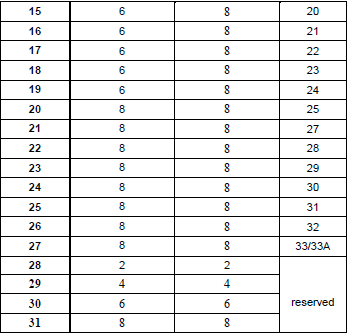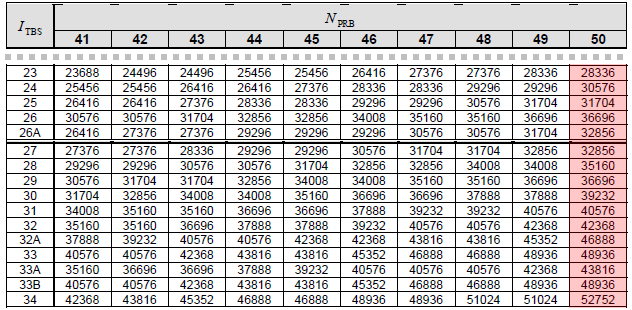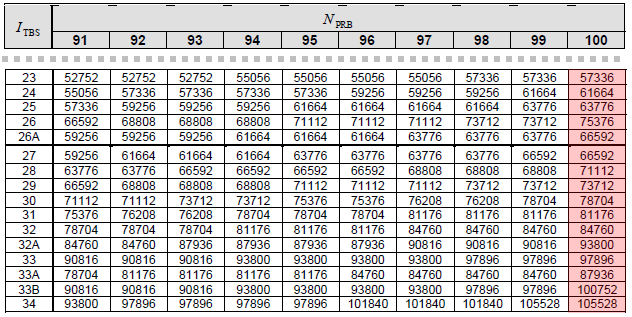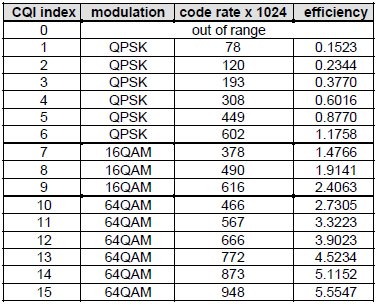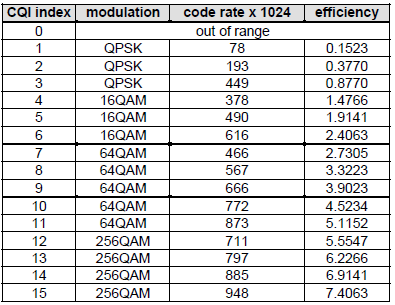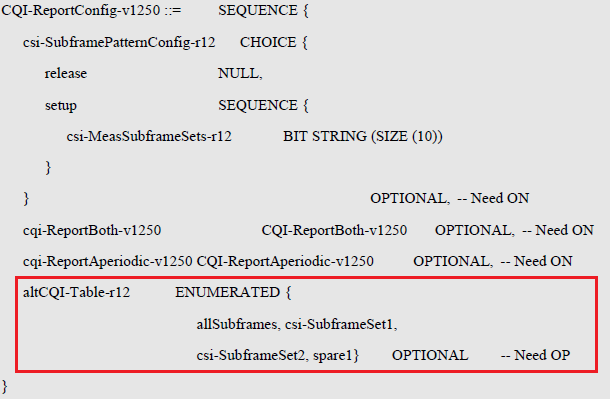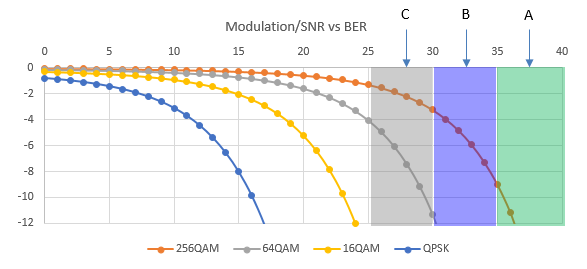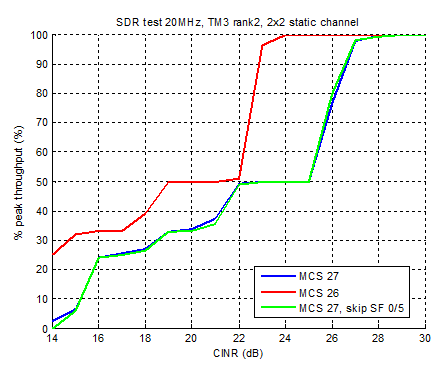|
4G/LTE - LTE Advanced |
|||||||||||||||
|
256 QAM - DL
From Rel 12, 3GPP defines (support) 256 QAM in Downlink. Conceptually, there would no problem with understanding the concept itself if you have basic knowledge of modulation and I/Q Constellation.
I see a lot of Physicall layer developer showing angry face at me when I say like this :). I know the implementation would be extremly difficult to implement this kind of higher modulation in wireless communication environment. Even though we need to implement this kind of higher modulation, we would not be allowed to increase downlink power for better resolution in constellation and for good enough SNR etc. So it will be very challenging not only for transmitter side (eNB) but also for reciever side (UE) as well.
Would this be really feasible (possible) ? Why we care about it ?
Would it be really possible to provide a connection with 256 QAM in real network situation ? I think even 64 QAM can be challenging in some situation like in cell boundary or high interference environment. What is the point of developing 256 QAM then ?
It is true that 256 QAM would not work well in usual macro cell environment as we normally are in as of now (May 2015), but think of a situation where we are using a small cell and the UE is very close to the cell (as we are using WiFi HotSpot in a coffee shop). It would be feasible in this kind of situation and 3GPP intoduced 256 QAM as a part of Small Cell Enhancement feature.
To support 256 QAM, a couple of new IEs are added to UE Capability Information message as shown below. (This is understandable. Almost every new feature is added in 3GPP, those features has been added to UE capability informatoin. If you see UE capability information supporting all the latest feature as of now (May 2015), you would already see super long UE Capability Information message.. I am not sure how long the message will get as the technology evolves even further)
Following is an example UE Capability Information that indicate the support of DL 256 QAM. +-nonCriticalExtension +-phyLayerParameters-v1170 = Omit +-ue-Category-v1170 = 9 +-nonCriticalExtension = 00001 +-rf-Parameters-v1180 = Omit +-mbms-Parameters-r11 = Omit +-fdd-Add-UE-EUTRA-Capabilities-v1180 = Omit +-tdd-Add-UE-EUTRA-Capabilities-v1180 = Omit +-nonCriticalExtension +-ue-Category-v11a0 = 11 +-measParameters-v11a0 = Omit +-nonCriticalExtension +-phyLayerParameters-v1250 = Omit +-rf-Parameters-v1250 | +-supportedBandListEUTRA-v1250 = 5 | | +-SupportedBandEUTRA-v1250 | | | +-dl-256QAM-r12 = supported | | | +-ul-64QAM-r12 = supported | | +-SupportedBandEUTRA-v1250 | | | +-dl-256QAM-r12 = supported | | | +-ul-64QAM-r12 = supported | | +-SupportedBandEUTRA-v1250 | | | +-dl-256QAM-r12 = supported | | | +-ul-64QAM-r12 = supported | | +-SupportedBandEUTRA-v1250 | | | +-dl-256QAM-r12 = supported | | | +-ul-64QAM-r12 = supported | | +-SupportedBandEUTRA-v1250 | | +-dl-256QAM-r12 = supported | | +-ul-64QAM-r12 = supported
When I first heard of 256 QAM, the first thing popped up in my mind was 'we may need additional MCS index to indicate 256 QAM' and then 'how to handle the backward compatibility issue' etc. But it turned out that the number of MCS index itself has no change (no additional MCS index). However, 3GPP defined a new MCS table as shown in 36.213 Table 7.1.7.1-1A.
Then you may ask how UE can figure out which of these two tables (conventional table and the new table) it has to use ? It should be informed to UE by higher layer. The short answer is that the same IE specifying CQI table is used to indicate which MCS table to use. This is based on 36.213 7.1.7.1 Modulation order determination as stated below : (This rule changes as LTE evolves.. I would put down multiple different versions of description so that you can get some idea on how this evolves.
< Release 12 > --------------------------------------------------
if the higher layer parameter altCQI-Table-r12 is configured, and if the PDSCH is assigned by a PDCCH/EPDCCH with DCI format 1/1B/1D/2/2A/2B/2C/2D with CRC scrambled by C-RNTI, - the UE shall use I_MCS and Table 7.1.7.1-1A to determine the modulation order ( Qm ) used in the physical downlink shared channel. - else - the UE shall use I_MCS and Table 7.1.7.1-1 to determine the modulation order ( Qm ) used in the physical downlink shared channel.
< Release 13 > --------------------------------------------------
- if the higher layer parameter altCQI-Table-r12 is configured, and if the PDSCH is assigned by a PDCCH/EPDCCH with DCI format 1/1B/1D/2/2A/2B/2C/2D with CRC scrambled by C-RNTI, - if the assigned PDSCH is transmitted only in the second slot of a subframe, the UE shall use MCS_I and Table 7.1.7.1-1A to determine the modulation order (Q'm). The modulation order (Qm) used in the physical downlink shared channel is set to Qm = Q'm ; - otherwise, the UE shall use MCS I and Table 7.1.7.1-1A to determine the modulation order (Qm) used in the physical downlink shared channel. - else - if the assigned PDSCH is transmitted only in the second slot of a subframe, the UE shall use MCS_I and Table 7.1.7.1-1 to determine the modulation order (Qm). The modulation order (Qm) used in the physical downlink shared channel is set to Qm = Q'm ; - otherwise, the UE shall use MCS_I and Table 7.1.7.1-1 to determine the modulation order (Qm) used in the physical downlink shared channel.
In Release 13, you would notice there is a new TBS index called 26A and 33A is added. This new index value is described in 36.213 7.1.7.2 Transport block size determination as follows :
When RNTI type is C_RNTI and the higher layer parameter altCQI-Table-r12 IS NOT configured :
When RNTI type is C_RNTI and the higher layer parameter altCQI-Table-r12 IS configured and DCI format is DCI format 1/1B/1D/2/2A/2B/2C/2D :
PhysicalConfigDedicatedSCell-r10 ::= SEQUENCE { .... pdsch-ConfigDedicated-v1280 PDSCH-ConfigDedicated-v1280 OPTIONAL .... }
PDSCH-ConfigDedicated-v1280 ::= SEQUENCE { tbsIndexAlt-r12 ENUMERATED {a26, a33} OPTIONAL }
< 36.213 Table 7.1.7.2.1-1: Transport block size table >
You can see some real examples of RRC message to enable 256 QAM for PCC and SCC in RRC Message Example section.
As in MCS table, CQI table is also redefined for 256 QAM. As shown in the table below, you would notice that the total number of CQI value stay same but the modulation mapping to each CQI index is redefined in 256 QAM (Table 7.2.3-2)
Then how can UE figure out which table it has to apply when it is reporting CQI ? It is instructed by Network via an RRC message as shown below.
Example 1 > Enabling 256 QAM for PCC (Primary Component Carrier) +-rrcConnectionReconfiguration ::= SEQUENCE +-rrc-TransactionIdentifier ::= INTEGER (0..3) [0] +-criticalExtensions ::= CHOICE [c1] +-c1 ::= CHOICE [rrcConnectionReconfiguration-r8] +-rrcConnectionReconfiguration-r8 ::= SEQUENCE [001100] +-measConfig ::= SEQUENCE OPTIONAL:Omit +-mobilityControlInfo ::= SEQUENCE OPTIONAL:Omit +-dedicatedInfoNASList ::= SEQUENCE OF SIZE(1..maxDRB[11]) [1] OPTIONAL:Exist | +-DedicatedInfoNAS ::= OCTET STRING SIZE(ALIGNED) +-radioResourceConfigDedicated ::= SEQUENCE [110101] OPTIONAL:Exist | +-srb-ToAddModList ::= SEQUENCE OF SIZE(1..2) [1] OPTIONAL:Exist | | +-SRB-ToAddMod ::= SEQUENCE [11] | +-drb-ToAddModList ::= SEQUENCE OF SIZE(1..maxDRB[11]) [1] OPTIONAL:Exist | | +-DRB-ToAddMod ::= SEQUENCE [11111] | +-drb-ToReleaseList ::= SEQUENCE OF OPTIONAL:Omit | +-mac-MainConfig ::= CHOICE [explicitValue] OPTIONAL:Exist | +-sps-Config ::= SEQUENCE OPTIONAL:Omit | +-physicalConfigDedicated ::= SEQUENCE [0100110010] OPTIONAL:Exist | | +-pdsch-ConfigDedicated ::= SEQUENCE OPTIONAL:Omit | | +-pucch-ConfigDedicated ::= SEQUENCE [0] OPTIONAL:Exist | | +-uplinkPowerControlDedicated ::= SEQUENCE OPTIONAL:Omit | | +-tpc-PDCCH-ConfigPUSCH ::= CHOICE [setup] OPTIONAL:Exist | | +-cqi-ReportConfig ::= SEQUENCE OPTIONAL:Omit | | +-soundingRS-UL-ConfigDedicated ::= CHOICE OPTIONAL:Omit | | +-antennaInfo ::= CHOICE [explicitValue] OPTIONAL:Exist | | +-schedulingRequestConfig ::= CHOICE OPTIONAL:Omit | | +-EXTENSION ::= SEQUENCE [00001] | | +-VERSION-BRACKETS1 ::= SEQUENCE OPTIONAL:Omit | | +-VERSION-BRACKETS2 ::= SEQUENCE OPTIONAL:Omit | | +-VERSION-BRACKETS3 ::= SEQUENCE OPTIONAL:Omit | | +-VERSION-BRACKETS4 ::= SEQUENCE OPTIONAL:Omit | | +-VERSION-BRACKETS5 ::= SEQUENCE [00001000] OPTIONAL:Exist | | +-antennaInfo-v1250 ::= SEQUENCE OPTIONAL:Omit | | +-eimta-MainConfig-r12 ::= CHOICE OPTIONAL:Omit | | +-eimta-MainConfigPCell-r12 ::= CHOICE OPTIONAL:Omit | | +-pucch-ConfigDedicated-v1250 ::= SEQUENCE OPTIONAL:Omit | | +-cqi-ReportConfigPCell-v1250 ::= SEQUENCE [0001] OPTIONAL:Exist | | | +-csi-SubframePatternConfig-r12 ::= CHOICE OPTIONAL:Omit | | | +-cqi-ReportBoth-v1250 ::= SEQUENCE OPTIONAL:Omit | | | +-cqi-ReportAperiodic-v1250 ::= CHOICE OPTIONAL:Omit | | | +-altCQI-Table-r12 ::= ENUMERATED [allSubframes] OPTIONAL:Exist | | +-uplinkPowerControlDedicated-v1250 ::= SEQUENCE OPTIONAL:Omit | | +-pusch-ConfigDedicated-v1250 ::= SEQUENCE OPTIONAL:Omit | | +-csi-RS-Config-v1250 ::= SEQUENCE OPTIONAL:Omit | +-EXTENSION ::= SEQUENCE [0000] | +-VERSION-BRACKETS1 ::= SEQUENCE OPTIONAL:Omit | +-VERSION-BRACKETS2 ::= SEQUENCE OPTIONAL:Omit | +-VERSION-BRACKETS3 ::= SEQUENCE OPTIONAL:Omit | +-VERSION-BRACKETS4 ::= SEQUENCE OPTIONAL:Omit HEX : 20 06 03 59 39 1E 4E 24 30 18 3A 10 17 00 30 00 07 88 80 00 08 01 B2 90 FE 08 08 48 68 23 4B 73 2B A0 23 13 2B 63 60 13 1B 08 28 0E 05 40 08 09 38 DC 04 01 08 80 18 00 00 84 08 36 05 40 08 14 18 36 05 40 08 10 00 68 26 05 40 08 12 80 5F B0 07 88 84 00 08 00 00 00 00 08 98 07 88 80 00 09 18 2F A0 00 00 00 08 BF 02 CF 03 20 08 1F 93 53 E0 FA 81 BC 0F A8 E0 60 78 E6 3E 9D 52 D2 E8 00 FB 5E 64 88 1F F8 20 3F 40 50 C1 C2 00 82 04 00
Example 2> Enabling 256 QAM for SCC (Secondary Component Carrier)
+-rrcConnectionReconfiguration-r8 ::= SEQUENCE [000101] +-measConfig ::= SEQUENCE OPTIONAL:Omit +-mobilityControlInfo ::= SEQUENCE OPTIONAL:Omit +-dedicatedInfoNASList ::= SEQUENCE OF OPTIONAL:Omit +-radioResourceConfigDedicated ::= SEQUENCE [000001] OPTIONAL:Exist | +-srb-ToAddModList ::= SEQUENCE OF OPTIONAL:Omit | +-drb-ToAddModList ::= SEQUENCE OF OPTIONAL:Omit | +-drb-ToReleaseList ::= SEQUENCE OF OPTIONAL:Omit | +-mac-MainConfig ::= CHOICE OPTIONAL:Omit | +-sps-Config ::= SEQUENCE OPTIONAL:Omit | +-physicalConfigDedicated ::= SEQUENCE [0000000000] OPTIONAL:Exist | | +-pdsch-ConfigDedicated ::= SEQUENCE OPTIONAL:Omit | | +-pucch-ConfigDedicated ::= SEQUENCE OPTIONAL:Omit | | +-pusch-ConfigDedicated ::= SEQUENCE OPTIONAL:Omit | | +-uplinkPowerControlDedicated ::= SEQUENCE OPTIONAL:Omit | | +-tpc-PDCCH-ConfigPUCCH ::= CHOICE OPTIONAL:Omit | | +-tpc-PDCCH-ConfigPUSCH ::= CHOICE OPTIONAL:Omit | | +-cqi-ReportConfig ::= SEQUENCE OPTIONAL:Omit | | +-soundingRS-UL-ConfigDedicated ::= CHOICE OPTIONAL:Omit | | +-antennaInfo ::= CHOICE OPTIONAL:Omit | | +-schedulingRequestConfig ::= CHOICE OPTIONAL:Omit | | +-EXTENSION ::= SEQUENCE [01000000] | | +-VERSION-BRACKETS1 ::= SEQUENCE OPTIONAL:Omit | | +-VERSION-BRACKETS2 ::= SEQUENCE [00000100000] OPTIONAL:Exist | | | +-antennaInfo-r10 ::= CHOICE OPTIONAL:Omit | | | +-antennaInfoUL-r10 ::= SEQUENCE OPTIONAL:Omit | | | +-cif-Presence-r10 ::= BOOLEAN OPTIONAL:Omit | | | +-cqi-ReportConfig-r10 ::= SEQUENCE OPTIONAL:Omit | | | +-csi-RS-Config-r10 ::= SEQUENCE OPTIONAL:Omit | | | +-pucch-ConfigDedicated-v1020 ::= SEQUENCE [1000] OPTIONAL:Exist | | | | +-pucch-Format-r10 ::= CHOICE [channelSelection-r10] OPTIONAL:Exist | | | | | +-channelSelection-r10 ::= SEQUENCE [1] | | | | | +-n1PUCCH-AN-CS-r10 ::= CHOICE [setup] OPTIONAL:Exist | | | | | +-setup ::= SEQUENCE | | | | | +-n1PUCCH-AN-CS-List-r10 ::= SEQUENCE OF SIZE(1..2) [2] | | | | | +-N1PUCCH-AN-CS-r10 ::= SEQUENCE OF SIZE(1..4) [4] | | | | | | +- ::= INTEGER (0..2047) [101] | | | | | | +- ::= INTEGER (0..2047) [102] | | | | | | +- ::= INTEGER (0..2047) [103] | | | | | | +- ::= INTEGER (0..2047) [104] | | | | | +-N1PUCCH-AN-CS-r10 ::= SEQUENCE OF SIZE(1..4) [4] | | | | | +- ::= INTEGER (0..2047) [105] | | | | | +- ::= INTEGER (0..2047) [106] | | | | | +- ::= INTEGER (0..2047) [107] | | | | | +- ::= INTEGER (0..2047) [108] | | | | +-twoAntennaPortActivatedPUCCH-Format1a1b-r10 ::= ENUMERATED OPTIONAL:Omit | | | | +-simultaneousPUCCH-PUSCH-r10 ::= ENUMERATED OPTIONAL:Omit | | | | +-n1PUCCH-AN-RepP1-r10 ::= INTEGER OPTIONAL:Omit | | | +-pusch-ConfigDedicated-v1020 ::= SEQUENCE OPTIONAL:Omit | | | +-schedulingRequestConfig-v1020 ::= SEQUENCE OPTIONAL:Omit | | | +-soundingRS-UL-ConfigDedicated-v1020 ::= SEQUENCE OPTIONAL:Omit | | | +-soundingRS-UL-ConfigDedicatedAperiodic-r10 ::= CHOICE OPTIONAL:Omit | | | +-uplinkPowerControlDedicated-v1020 ::= SEQUENCE OPTIONAL:Omit | +-EXTENSION ::= SEQUENCE [00000] +-securityConfigHO ::= SEQUENCE OPTIONAL:Omit +-nonCriticalExtension ::= SEQUENCE [01] OPTIONAL:Exist +-lateNonCriticalExtension ::= OCTET STRING OPTIONAL:Omit +-nonCriticalExtension ::= SEQUENCE [001] OPTIONAL:Exist +-otherConfig-r9 ::= SEQUENCE OPTIONAL:Omit +-fullConfig-r9 ::= ENUMERATED OPTIONAL:Omit +-nonCriticalExtension ::= SEQUENCE [010] OPTIONAL:Exist +-sCellToReleaseList-r10 ::= SEQUENCE OF OPTIONAL:Omit +-sCellToAddModList-r10 ::= SEQUENCE OF SIZE(1..maxSCell-r10[4]) [1] OPTIONAL:Exist | +-SCellToAddMod-r10 ::= SEQUENCE [111] | +-sCellIndex-r10 ::= INTEGER (1..7) [1] | +-cellIdentification-r10 ::= SEQUENCE OPTIONAL:Exist | | +-physCellId-r10 ::= INTEGER (0..503) [1] | | +-dl-CarrierFreq-r10 ::= INTEGER (0..maxEARFCN[65535]) [3048] | +-radioResourceConfigCommonSCell-r10 ::= SEQUENCE [0] OPTIONAL:Exist | | +-nonUL-Configuration-r10 ::= SEQUENCE [00] | | +-ul-Configuration-r10 ::= SEQUENCE OPTIONAL:Omit | | +-EXTENSION ::= SEQUENCE [0000] | +-radioResourceConfigDedicatedSCell-r10 ::= SEQUENCE [1] OPTIONAL:Exist | | +-physicalConfigDedicatedSCell-r10 ::= SEQUENCE [10] OPTIONAL:Exist | | | +-nonUL-Configuration-r10 ::= SEQUENCE [1001] OPTIONAL:Exist | | | +-ul-Configuration-r10 ::= SEQUENCE OPTIONAL:Omit | | | +-EXTENSION ::= SEQUENCE [01000] | | | +-VERSION-BRACKETS1 ::= SEQUENCE OPTIONAL:Omit | | | +-VERSION-BRACKETS2 ::= SEQUENCE [00100] OPTIONAL:Exist | | | | +-antennaInfo-v1250 ::= SEQUENCE OPTIONAL:Omit | | | | +-eimta-MainConfigSCell-r12 ::= CHOICE OPTIONAL:Omit | | | | +-cqi-ReportConfigSCell-v1250 ::= SEQUENCE [0001] OPTIONAL:Exist | | | | | +-csi-SubframePatternConfig-r12 ::= CHOICE OPTIONAL:Omit | | | | | +-cqi-ReportBoth-v1250 ::= SEQUENCE OPTIONAL:Omit | | | | | +-cqi-ReportAperiodic-v1250 ::= CHOICE OPTIONAL:Omit | | | | | +-altCQI-Table-r12 ::= ENUMERATED [allSubframes] OPTIONAL:Exist | | | | +-uplinkPowerControlDedicatedSCell-v1250 ::= SEQUENCE OPTIONAL:Omit | | | | +-csi-RS-Config-v1250 ::= SEQUENCE OPTIONAL:Omit | | | +-VERSION-BRACKETS3 ::= SEQUENCE OPTIONAL:Omit | | | +-VERSION-BRACKETS4 ::= SEQUENCE OPTIONAL:Omit | | | +-VERSION-BRACKETS5 ::= SEQUENCE OPTIONAL:Omit | | +-EXTENSION ::= SEQUENCE [000] | +-EXTENSION ::= SEQUENCE [00] +-nonCriticalExtension ::= SEQUENCE OPTIONAL:Omit
HEX : 20 02 81 80 01 D0 03 81 04 7E 19 43 30 67 0D 18 69 0D 41 AC 36 12 87 00 10 BE 80 A8 9C 3A 64 05 90 44 01 10 40 00
When I first heard of 256 QAM will be supported in LTE, the first question poping up in my mind was "Is it reailly feasible ? Would it be practically usable in real network in the field ?". To get some rought answer to this question, let's think of SNR vs BER characteristics. This can be illustrated as below. This illustrates the correllation between SNR and BER based on the assumption that no channel coding or any kind of error correction were used (If you are not familiar with how to interprete this graph, refer to SNR page for the detailed explanation). According to this graph, If we want to use 256QAM without any channel coding/error correction, it would be safe to use 256 QAM at SNR higher than 35 dB (marked as section (A)) and may be usable as well at 30~35 dB (marked as section (B)).
Then the question would be "would it be practically easy to have live network channel condition with SNR of 35 dB or greater ?". It would be very unlikely unless you have all of the following conditions met. i) Radio Channel Condition is extremely good ii) The performance of ADC/DAC converter is extremly good iii) Transmitter and Reciever RF path design / implementation should be extremly good iv) Very efficient Error Correction method should be used In real life, we have no control over item i). We should rely completely on mother nature for this. However if it is in testing condition in the lab, we would have great degree of control for this. Item ii) is completely up to radio modem designer/vendor because this would be fixed at the design phase and once this is determined, it would be almost impossible to change the performance afterwords. Especially determining ADC/DAC bit resolution would be crucial. As you see in ADC page, with 1 bit larger or smaller bit resultion you would gain or lose around 6 dB SNR. Of course, Item iii) will be handled by RF designer. The noise figure of all the components and traces between those components should be very low. When you have plan to use 256QAM in multi channel configuration (e.g, Carrier Aggregation.. especially Carrier Aggregation in continguous channels), ACLR/ACPR characteristics should be extrememly good. Item iv). I don't think anybody can have control over this once 3GPP Technical Specification is released.
Assuming that all of these conditions are met and thanks to Error Correction algorithm being used in LTE, we would have a better performanace (measured as throughput or BLER) comparing to what we estimated based on BER. A result from R4-151580 (Ref [1]) shows more realistic performance as shown below. According to this plot, you may say you would get almost 100% peak throughput (i.e, 0% BLER) around 30 dB SNR. However, one thing to be noticed is that the throughput would drop by 50% with only 2 dB SNR change at slighly lower than 30 dB SNR. This is 2 x 2 and 2 layer case. If it is 4 x 4 and 4 layers, the performance would degrade further. Number of Tx antenna itself would not be the culprit of the performance degradation. The degradation would come from practical reasons. It would be very diffcult to design / implement in such a way that the noise figure the Tx / Rx path remain very low for all RF path when the number of Antenna gets larger.
< R4-151580 : Figure 3. Simulation results for 256QAM SDR test >
Reference :
[1] R4-151580 : 3GPP TSG-RAN WG4 #74bis Rio de Janeiro, Brazil, 20th – 24th April 2015
|
|||||||||||||||

